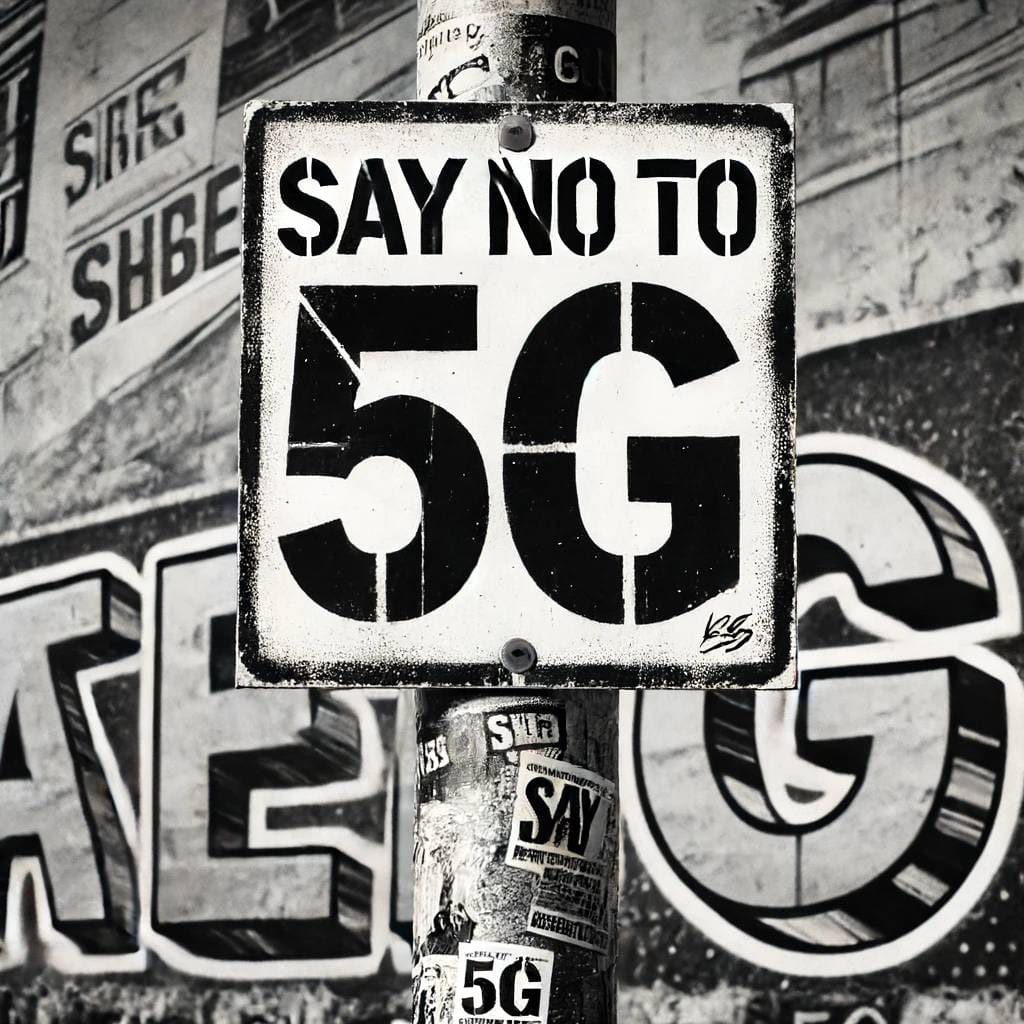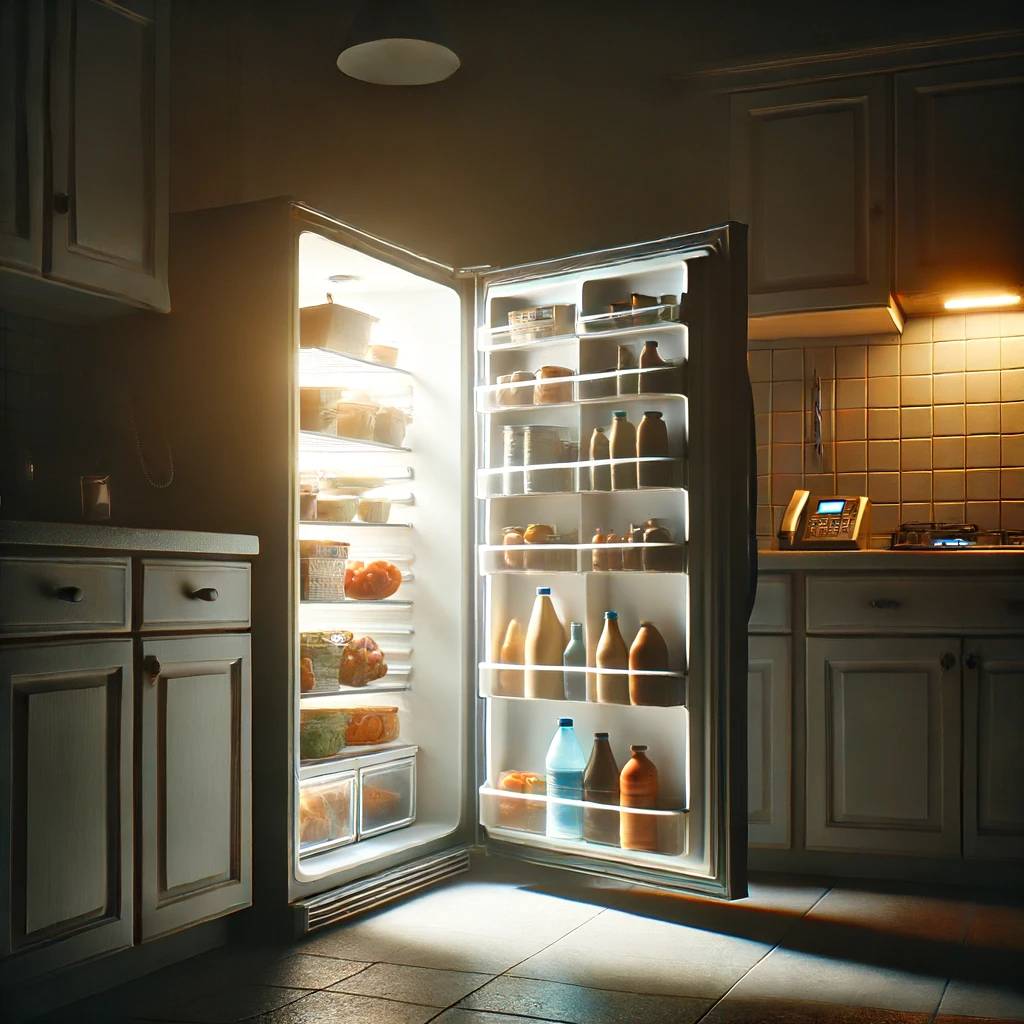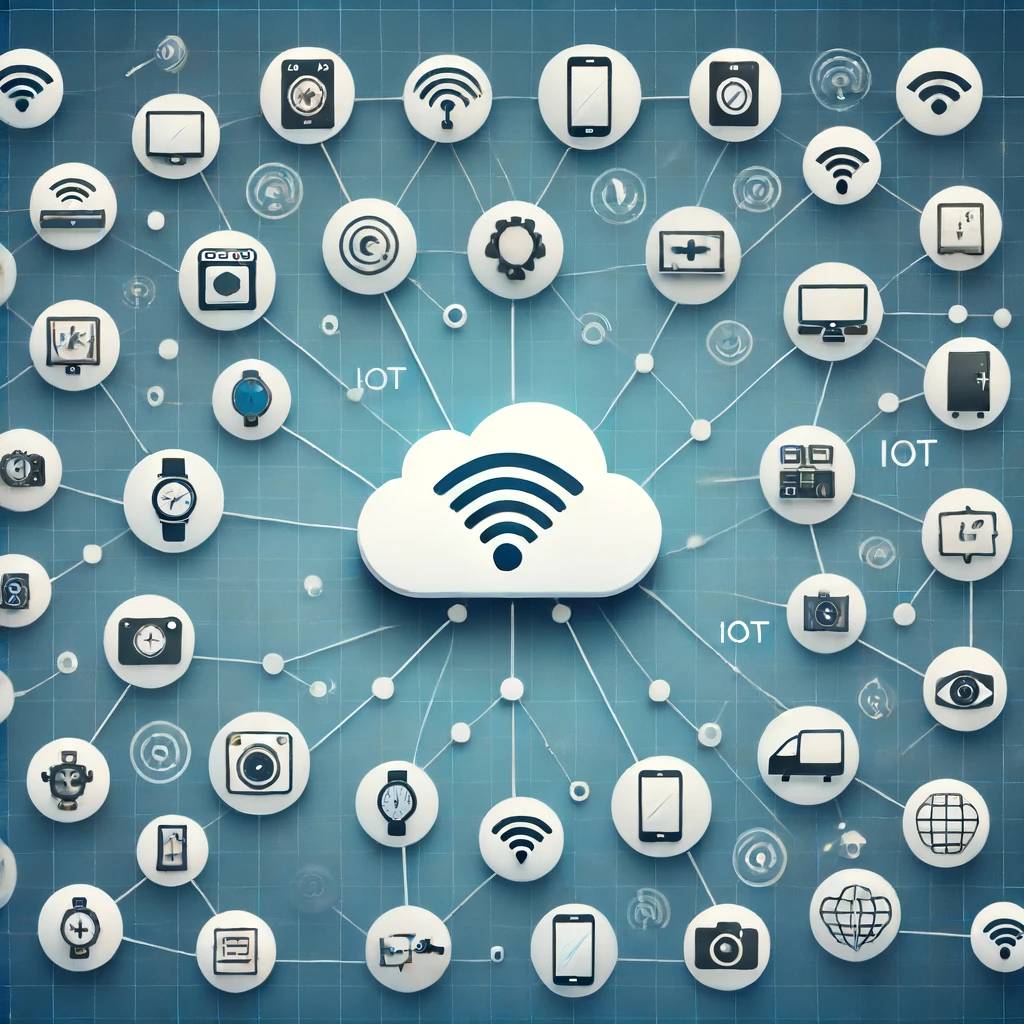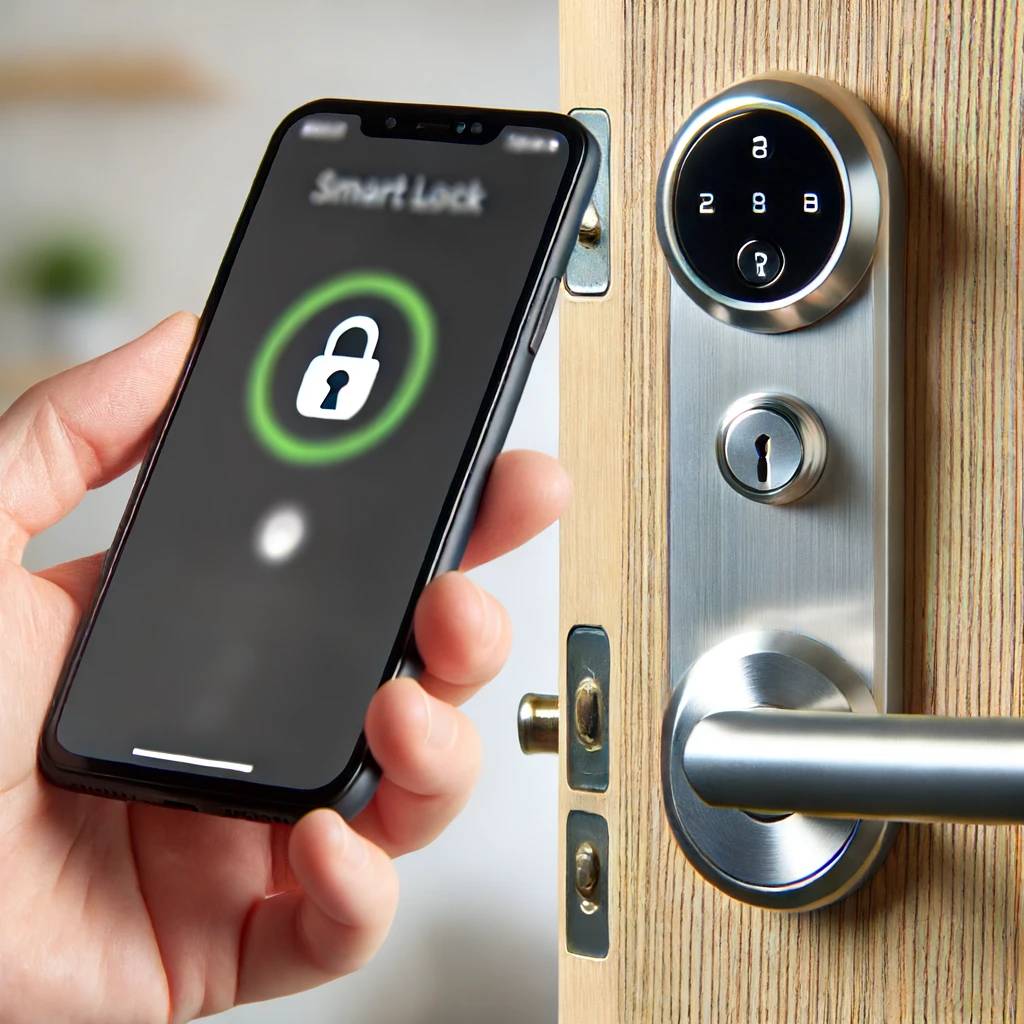The Internet of Things, or IoT, is a huge jump for humanity at a technological level. Tech pioneer Kevin Ashton coined this term in 1999, and his vision was for computers to manage everything electronic (or, in some cases, non-electronic as well). At its inception, IoT promised a revolution in the way we live and work, and so far, it hasn’t failed to impress us.
From when the IoT was just a concept to this day, we’ve seen mind-blowing developments in the tech industry. We now have machines doing things for us that once required hours of manual labor.
But the Internet of Things doesn’t only come with benefits — it has a downside that requires a more in-depth exploration. This is the EMF side.
IoT systems emit a hefty amount of EMF, which adds to our already EMF-polluted environment. And that’s a concern on a number of levels.
So, let’s dive into this topic to better understand the IoT’s pros and cons, as well as how you can protect yourself from the EMF problem it will eventually cause.
What is the Internet of Things?
The Internet of Things essentially refers to the billions of devices, objects, and appliances connected to the internet through wireless networks.

Want to Slash Your EMF Health Risks?
Want to Slash Your EMF Health Risks?
Good! Learn the one small change you should make right now.
An additional characteristic of an IoT device is that it can send your user data to its company’s cloud servers. The servers then input your data into machine learning, which finds ways to enhance your user experience based on that data.
Thanks to the omnipresence of wireless internet, you can now turn anything from a pill to an airplane into an IoT object.
How Does IoT Work?
The IoT uses smart computer chips for data collection. It collects things like your location and gadget-specific behavior. The company you purchased your IoT product from collects the incoming data in their cloud storage.
Now, artificial intelligence self-uploads the information and weeds out unnecessary stuff before passing it to machine learning (ML).
Once the ML software has the filtered data, it then works on identifying and applying the necessary changes to enhance your user experience.
The process of machine learning is relatively simple – not the development part, obviously, but the way it works. It’s automatic, and it learns and grows using the data collected from you.
Think of this: you search for a certain video on YouTube and watch it along with 2-3 similar videos, then the next time you refresh your homepage, it’s filled with videos similar to those. That’s machine learning at work.
IoT uses similar programs to understand your behavior and make changes accordingly. Smart refrigerators are a real-life example of present-day IoT.
These refrigerators scan most of the products inside them and notify your phone whenever a particular product is about to expire or run out.
Smartphones also play a crucial role in the IoT infrastructure, as most of these products come with a mobile phone application.
IoT Devices
There are many categories of IoT devices. Some of them are available right now, and some are in their developmental phase. These categories include:
- Home appliances
- Home security systems
- Farming equipment
- Smartwatches like Fitbit and Apple Watch
- Factory equipment
- Inventory trackers
- Biometric cybersecurity scanners
- Shipping container and logistics tracking
- Connected cars, and many more.
Here’s an interesting thing that IoT experts say: In the future, we won’t need traffic lights. Self-driving vehicles will overtake the market. And since they will be connected to the internet, these cars will be able to communicate with each other without any human intervention.
Data on the internet travels at the speed of light. So your car can notify other vehicles that it’s coming from a certain direction at a certain speed. And all other cars on the road will adjust accordingly.
They even go as far as to say that since AI reacts a thousand times faster than humans, road accidents will be a thing of the past.
IoT Applications
The current IoT infrastructure is distributed into different categories, including consumer, medical, infrastructure, and military.
Consumer Applications
A significant number of IoT devices are made for consumer use. This is partly because of the expensive nature of IoT development. Without selling IoT devices to the general public, it would be tough to continue the technology’s development and achieve its highest potential.
Some device categories I mentioned above are designed specifically for consumer use.
You may have heard of smart homes, one of the most outstanding achievements in IoT development. These homes can have a lot of benefits, especially for the elderly and people with disabilities.
Smart homes are internet-connected. So, most things in them are automatic.
From lighting, heating, air conditioning, and security systems to media and camera systems, everything knows when to start operating and when to stop. And if a certain automation feature isn’t for you, you can control it right from your phone.
For example, let’s say you leave for work at 9 AM and arrive home at around 6. After a few days of sampling, you can expect things like your heater warming your room to the perfect temperature right before you arrive and your lights turning off automatically after you leave.
Similarly, elder care and assisting people with disabilities is one of the key features of home automation. It can monitor for things like medical emergencies and perform various duties to make their lives easier.
Grocery Stores
Another feat we’ve been seeing in consumer IoT is in grocery stores.
“There can be sensors for alerting when shelves need to be replenished or tracking to tell where items are in the supply chain,” says Sucharita Kodali, an analyst at Forrester.
Besides helping grocery stores automate their systems, IoT’s also been making shoppers’ lives easier for the past few years. Cue Amazon Go.
In 2018, Amazon introduced what could possibly be the world’s most advanced shopping technology. They named it “Just Walk Out Technology.”
This technology lets you actually cut the line without being rude.
Amazon Go is a series of physical stores where you can simply shop and walk out of the store. The “Just Walk Out Technology” senses the items you’ve taken from the store and charges them to your Amazon account.
All you need is an Amazon shopping app on your phone. You can simply scan the QR code in the doorway, and that’s it. You’re now ready to shop and leave without paying a single penny at the store.
So far, Amazon has unveiled over 25 Amazon Go stores in the US, including the larger Amazon Go Grocery store.
Entertainment: IoT & The Metaverse
In April 2022, Mike White, the Disney executive, met senior leaders in the company to discuss the metaverse strategy in terms of what they’re calling “next-generation storytelling.”
After bringing many beloved characters to life in its theme parks, Walt Disney Co. is now hoping to keep up with the advancing world by prepping themselves for the metaverse.
Disney Chief Executive Bob Chapek has signaled a significant interest in the metaverse.
“It’s going to take all the great things that we as a media company have with Disney+ and use that as a platform for the metaverse,” Chapek said. “But at the same time, we have something that no one else has, and that’s the physical world, a world of our parks. And so, if the metaverse is the blending of the physical and the digital in one environment, who can do it better than Disney?”
So, is this a sign that the metaverse will soon be joining Hollywood? Could be. And if that’s the case, we’re not far away from our entertainment experience, climbing to the next level.
Medical Applications
The Internet of Medical Things, or IoMT, sometimes called “smart healthcare,” is also one of the public-benefitting uses of the Internet of Things. This is primarily dedicated to patient health monitoring, especially after implant device surgeries.
Smartwatch companies have also contributed to the IoMT infrastructure by developing products for patient health monitoring.
Infrastructure Applications
The infrastructural side of the IoT monitors and controls operations of sustainable urban and rural infrastructures. It sends real-time data from places like bridges and railway tracks, allowing the authorities to increase safety where required and lower the risk of accidents.
Examples of the IoT’s infrastructural applications are metropolitan scale deployments, energy"Energy" is a fundamental concept in physics, often described as the ability to do work or cause change. In everyday terms, it's what is needed to move things, heat them... management, environmental monitoring, and living labs.
Military Applications
The Internet of Military Things are IoT devices used for surveillance, recon, and many other combat-related strategies.
Recently, the U.S. Army Research Laboratory (ARL) launched the Internet of Battlefield Things project. This project focuses on basic IoT-related science to enhance a soldier’s abilities on a battlefield.
Similarly, the Defense Advanced Research Projects Agency (DARPA) also launched a project named “Ocean of Things,” which they use to monitor environmental and vessel activities data.
IoT is Vulnerable
Even though the IoT is relatively new, there’s huge competition among tech companies to be the first ones to release new concepts. Because of this, they have to work faster, and the time crunch sometimes leaves security gaps in the devices.
These vulnerabilities obviously don’t reach the IoT’s military applications because of the strict testing phases products go through before being deployed to the military.
The devices I am referring to are the ones sold to the general public.Dark Reading, one of the most-read cybersecurity news sites on the internet, says that IoT devices are commonly exposed to the eight most common firmware vulnerabilities.
These vulnerabilities are:
- Unauthenticated access
- Weak authentication
- Hidden back doors
- Password hashes
- Encryption keys
- Buffer overflows
- Open-source code
- Debugging services
So, even if you buy these devices, you need to make sure that you follow the best cybersecurity practices.
Relationship Between IOT and 5G
5G"5G" refers to the fifth generation of wireless communication technology, a step up from the previous 4G, 3G, and 2G networks. It's designed to provide faster internet speeds, more reliable... was engineered from the groundIn the context of electricity, "ground" or "earthing" refers to a reference point in an electrical circuit from which voltages are measured, a common return path for electric current, or... up to support the network requirements of the IoT. This is because IoT devices require a high-speed internet connection with minimal latency. And the current 4G infrastructure isn’t enough to support its needs.
According to the GSMA, 1.8 billion users will connect to 5G by 2025, which means that the massive deployment of high-performing IoT gadgets is not too far away.
The 5G Concern
Contrary to what most tech companies say, non-ionizing radiation"Radiation" in the context of Electromagnetic Fields (EMF) refers to the process by which energy is emitted and transmitted through space or a material medium in the form of electromagnetic... has been proven to cause health issues ranging from minor sleep disorders to chronic diseases like cancer. There are literally thousands of peer-reviewed research papers on this subject, and together they make it crystal clear that EMF affects humans, flora, and fauna.
The current 5G network will also emit non-ionizing EMFs, except on a much higher frequency"Frequency" in the context of electricity, Electromagnetic Fields (EMF), and wireless communication, can be thought of as the number of times something happens in a second. Specifically, it refers to... than 4G. A paper published in the Journal of Epidemiology & Community Health says that 5G lacks clarity on what tech is being used and lacks enough scientific evidence to be considered entirely safe. Adding to this, they conclude that 5G deployment should be halted until enough research is done and we know for sure that it’s safe for living beings.

I have an entire series of articles dedicated to 5G. There I talk about the nature of 5G, its health risks, and the actions you can take to protect yourself.
What Does Massive IoT Deployment Mean for You?
We’re already facing unprecedented levels of EMF in our environment. This is often referred to as EMF pollution because its presence is unnatural. It’s increasing and, though invisible, is detrimental to human health.
With gadgets like cell phones, WiFi routers, smart meters, laptops, and tablets, it is more challenging than ever to escape heavy EMF exposure.
On top of that, the number of new gadgets being introduced to the market continues to explode. For example, just when we thought we had all the Apple devices, we could ever need, along came AirTags—tiny, button-sized tracking devices that attach to your most important personal belongings.
While sticking an Apple AirTag to your car keys will undoubtedly make it harder to lose them, this technology means that a plethora of your personal items – like your keys or your wallet – that are not currently sources of EMF will become sources of EMF.
This is a clear and immediate example of the impending explosion in the number of sources of EMF to which we are exposed in our daily lives.
It’s Not Uncontrollable—“Yet”
Despite the prevalence of the EMF-emitting wireless infrastructure, you still have a lot of control over reducing your exposure, by reducing your personal tech use and maximize your distance from the EMF-emitting tech you do use.
But this will become increasingly difficult as IoT devices and infrastructure deploy on what will inevitably be a massive scale.
The IoT network depends on 5G, which has a shorter range than 4G. This means that small cells (portable 5G towers) are being installed everywhere. Between the IoT devices, and the 5G infrastructure, we’re looking at a massive increase in high-frequency EMF emissions.
We still don’t know what frequency the 5G network will operate on when it reaches its full potential.
This could leave us in a vulnerable state where high-frequency EMF is everywhere, and there isn’t much that we can do about it.
What Can You Do?
My goal is not to keep you from enjoying new technology. I just want you to take the necessary precautions to make it safer to use.
Again, you can visit my 5G content hub to learn more about the subject.
Recently, lots of people have been asking their respective governments to stop 5G rollouts. And many countries have also invoked a temporary halt to 5G deployment until research confirms it is safe.
You can share your knowledge with your family and friends. But note that you’ll have to talk with them in a way that convinces them to make changes in their lives.
For this, I’ve created an EMF advocacy training guide which you can download for free.
The second step would be to refrain from buying unnecessary tech gadgets. This is actually a big problem. Every year people purchase new tech gadgets and realize later on that they didn’t even need them.
Reducing unnecessary tech purchases will reduce your EMF exposure by a lot. This is super important to remember, especially in a few years when IoT gadgets will roll out on a massive scale. They’ll certainly look amazing, and some may give you incredible benefits. But do I actually need this? — is the question you should ask whenever it crosses your mind.

Final Thoughts
The Internet of Things is certainly a massive leap for humanity. It promises to give us things that we’ve never seen or experienced before, and there’s no doubt about its ability to change our lives.
But we’re not there yet.
IoT and 5G have yet to reach their full potential. So right now, your main goal should be to keep yourself and your loved ones safe from the increasing levels of EMF that are currently in our environment.
Minimizing your tech use and maximizing your distance from EMF sources will take you far in the journey of reducing your EMF exposure.
There are many other ways to further mitigate your exposure, and I’ve written about them on this blog. You can start by browsing my Healthy Living Tips.










